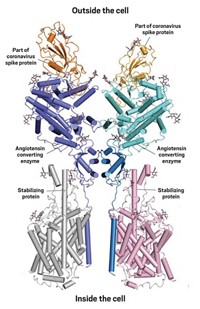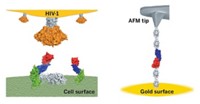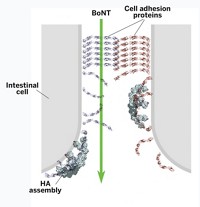Advertisement
Grab your lab coat. Let's get started
Welcome!
Welcome!
Create an account below to get 6 C&EN articles per month, receive newsletters and more - all free.
It seems this is your first time logging in online. Please enter the following information to continue.
As an ACS member you automatically get access to this site. All we need is few more details to create your reading experience.
Not you? Sign in with a different account.
Not you? Sign in with a different account.
ERROR 1
ERROR 1
ERROR 2
ERROR 2
ERROR 2
ERROR 2
ERROR 2
Password and Confirm password must match.
If you have an ACS member number, please enter it here so we can link this account to your membership. (optional)
ERROR 2
ACS values your privacy. By submitting your information, you are gaining access to C&EN and subscribing to our weekly newsletter. We use the information you provide to make your reading experience better, and we will never sell your data to third party members.
Biological Chemistry
How A Toxin Avoids Digestion
Biochemistry: The key to botulinum toxin’s oral toxicity may unlock ways to deliver protein drugs by mouth
by Jyllian Kemsley
February 27, 2012
| A version of this story appeared in
Volume 90, Issue 9

The structure of a botulinum neurotoxin bound to a protein shield provides clues as to how the toxin survives the digestive tract, according to a new report (Science, DOI: 10.1126/science.1214270). The results may point to ways to prevent botulism specifically. More generally, they could suggest ways to orally deliver protein-based drugs, which now must be injected to avoid digestion.
Botulism is muscle paralysis caused when a neurotoxin produced by the bacterium Clostridium botulinum inhibits release of a neurotransmitter. One way to get the disease is by eating toxin-contaminated food, but how the large protein survives the digestive tract to get to the bloodstream and neurons has been an open question.
Researchers knew that the neurotoxin is protected by another protein, called nontoxic nonhemagglutinin (NTNHA), but not how the shielding works.
A group led by Rongsheng Jin, a neuroscience professor at Sanford-Burnham Medical Research Institute in La Jolla, Calif., has now solved the crystal structure of an inactivated botulinum neurotoxin complexed to its protector NTNHA. The structure shows that NTNHA largely surrounds the part of the toxin involved in binding neuron receptors and moving through membranes. The two proteins associate through electrostatic interactions between a positively charged toxin surface and a negatively charged NTNHA surface, the researchers found.
At low pH, such as in the gut, key toxin glutamate and aspartate residues would be protonated, promoting association with NTNHA. At pH 7.5, such as in the bloodstream, the residues would be deprotonated, allowing release of the toxin from NTNHA.
The new structural information helps explain the toxin’s oral toxicity, says Luisa Cheng, a U.S. Department of Agriculture biologist who was not involved in the work.
The work won’t lead directly to a treatment for botulism, because symptoms appear only once the toxin reaches neurons. But a way to disrupt toxin-NTNHA association could stop the disease in the face of a potential outbreak, Jin says. It could also inspire new oral delivery methods for protein pharmaceuticals, such as by combining a therapeutic, a toxin fragment, and NTNHA.





Join the conversation
Contact the reporter
Submit a Letter to the Editor for publication
Engage with us on Twitter